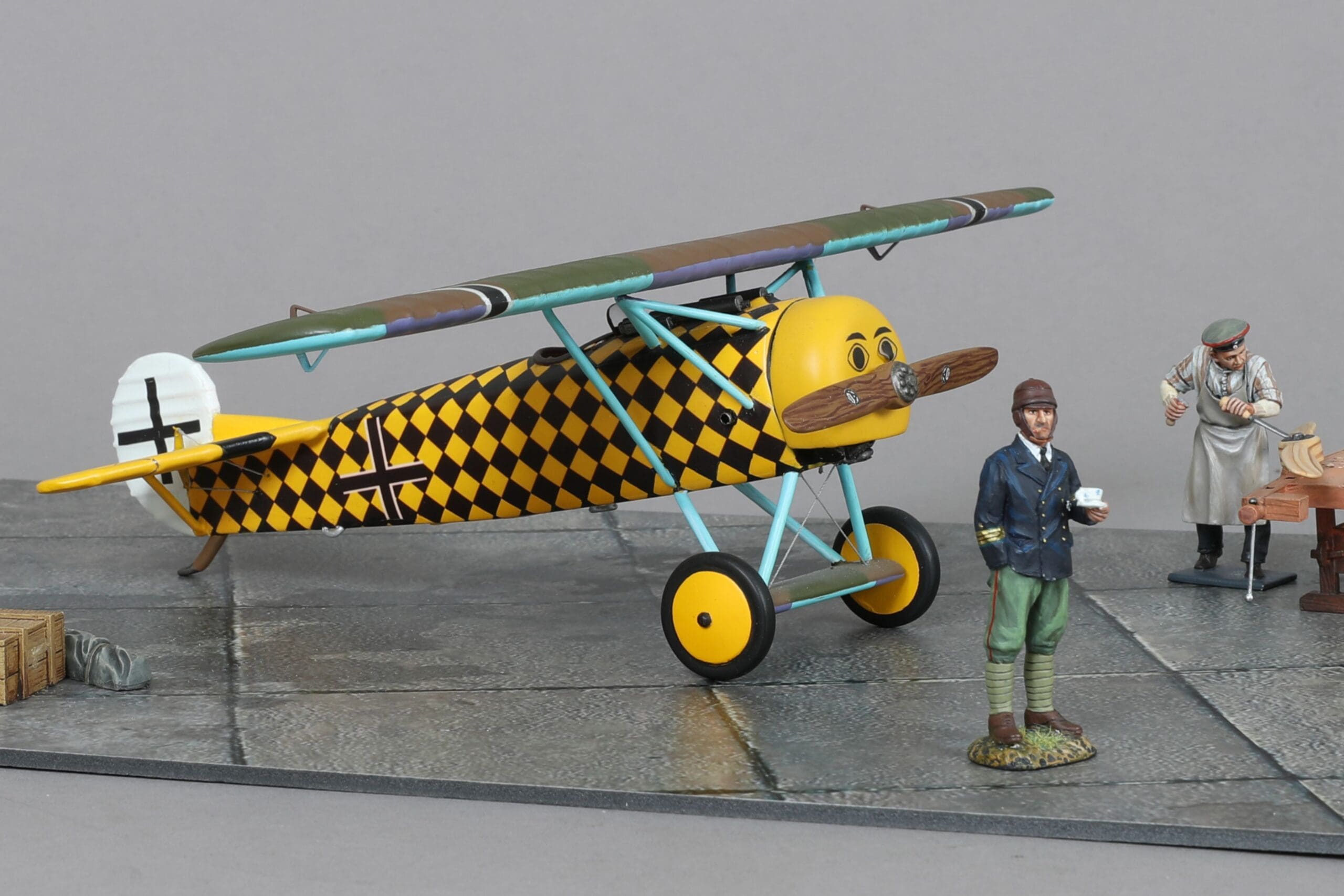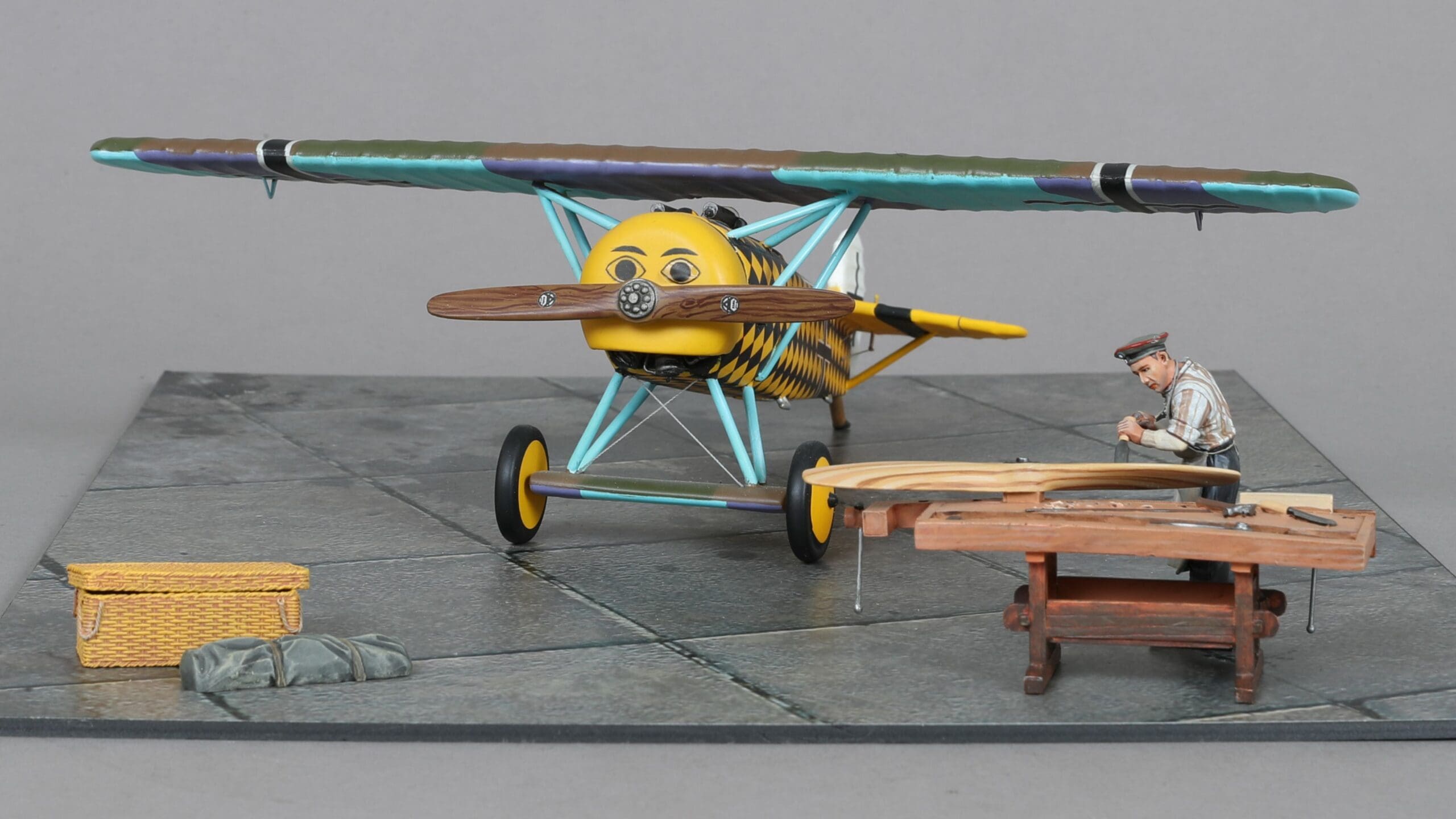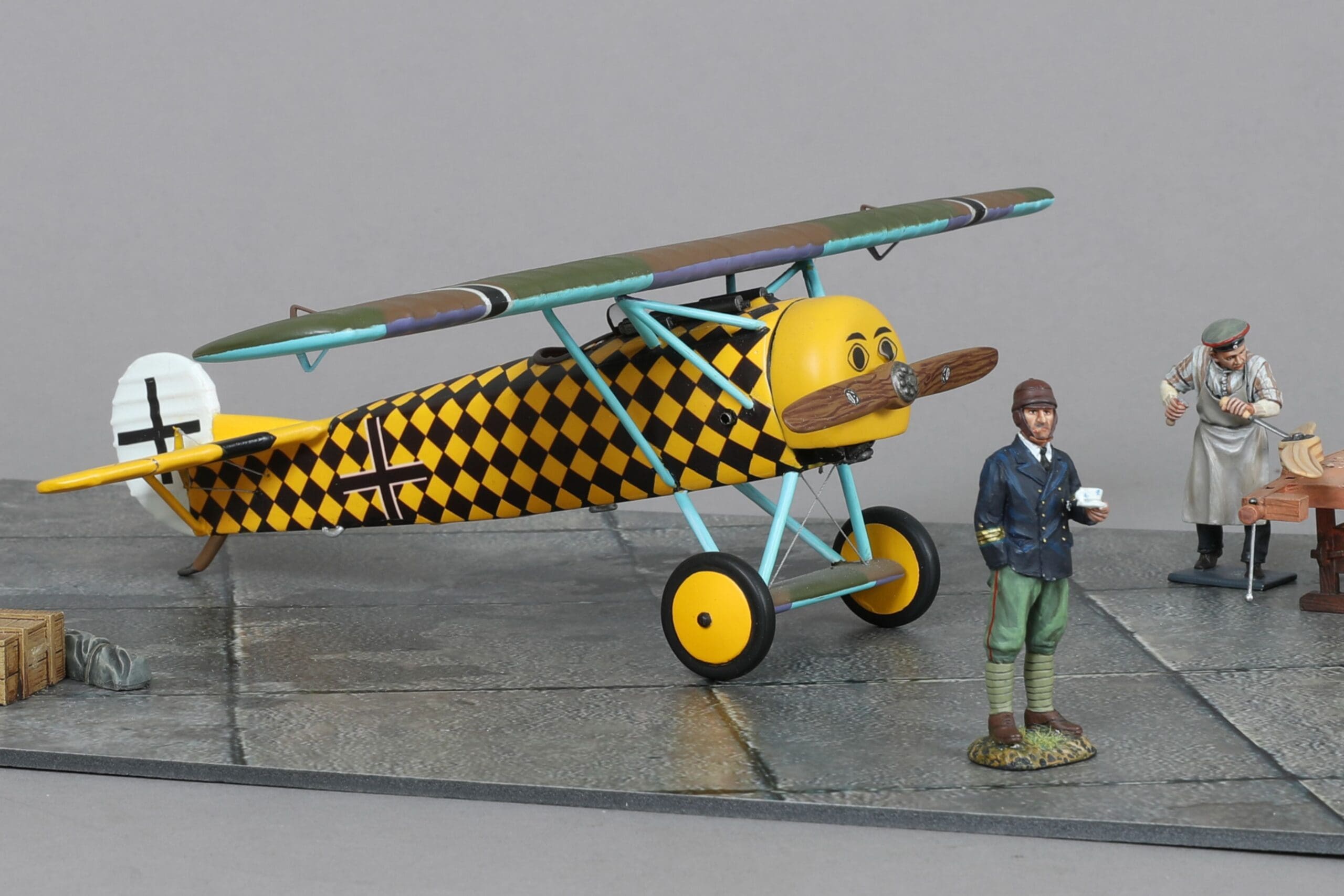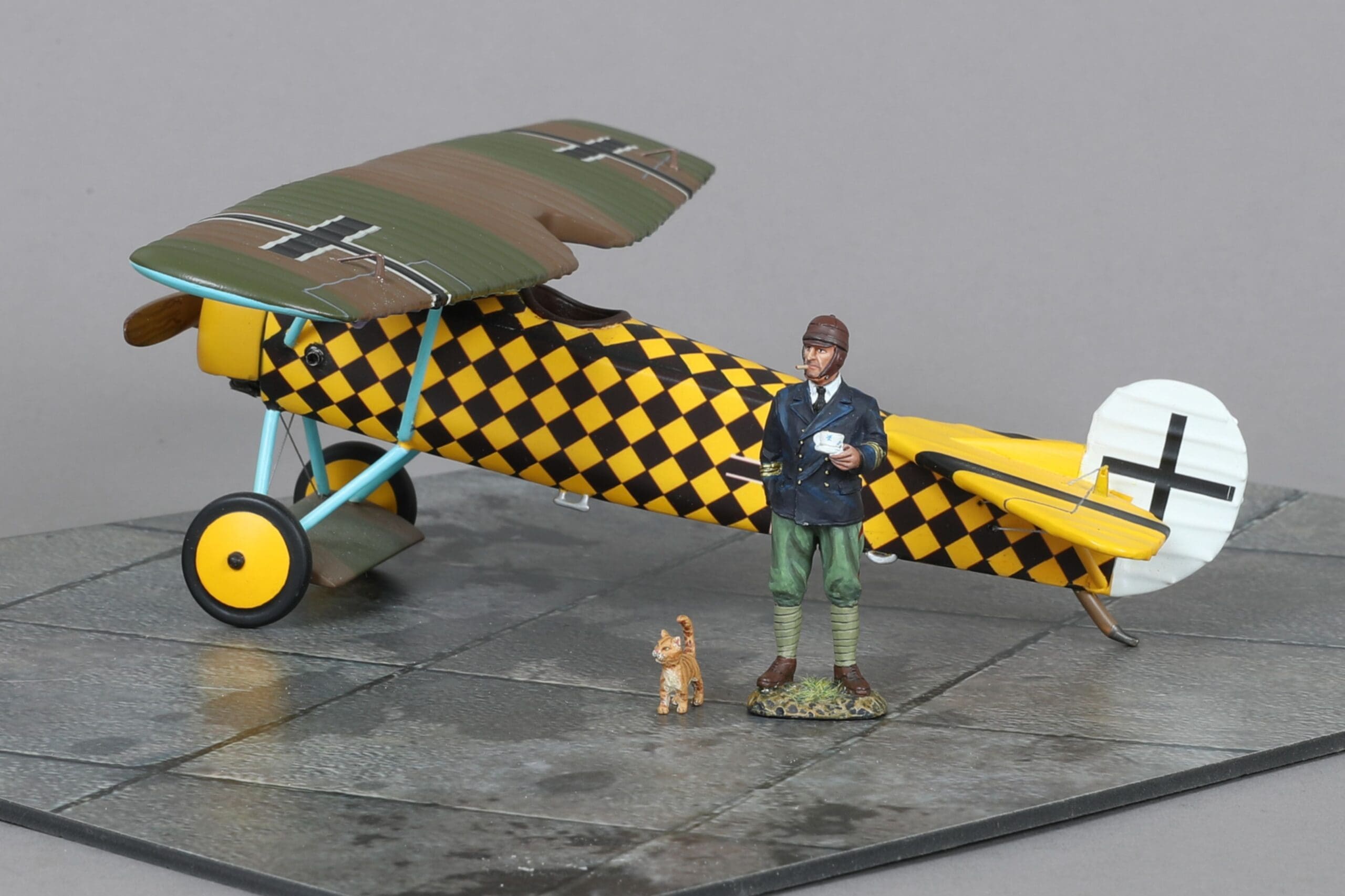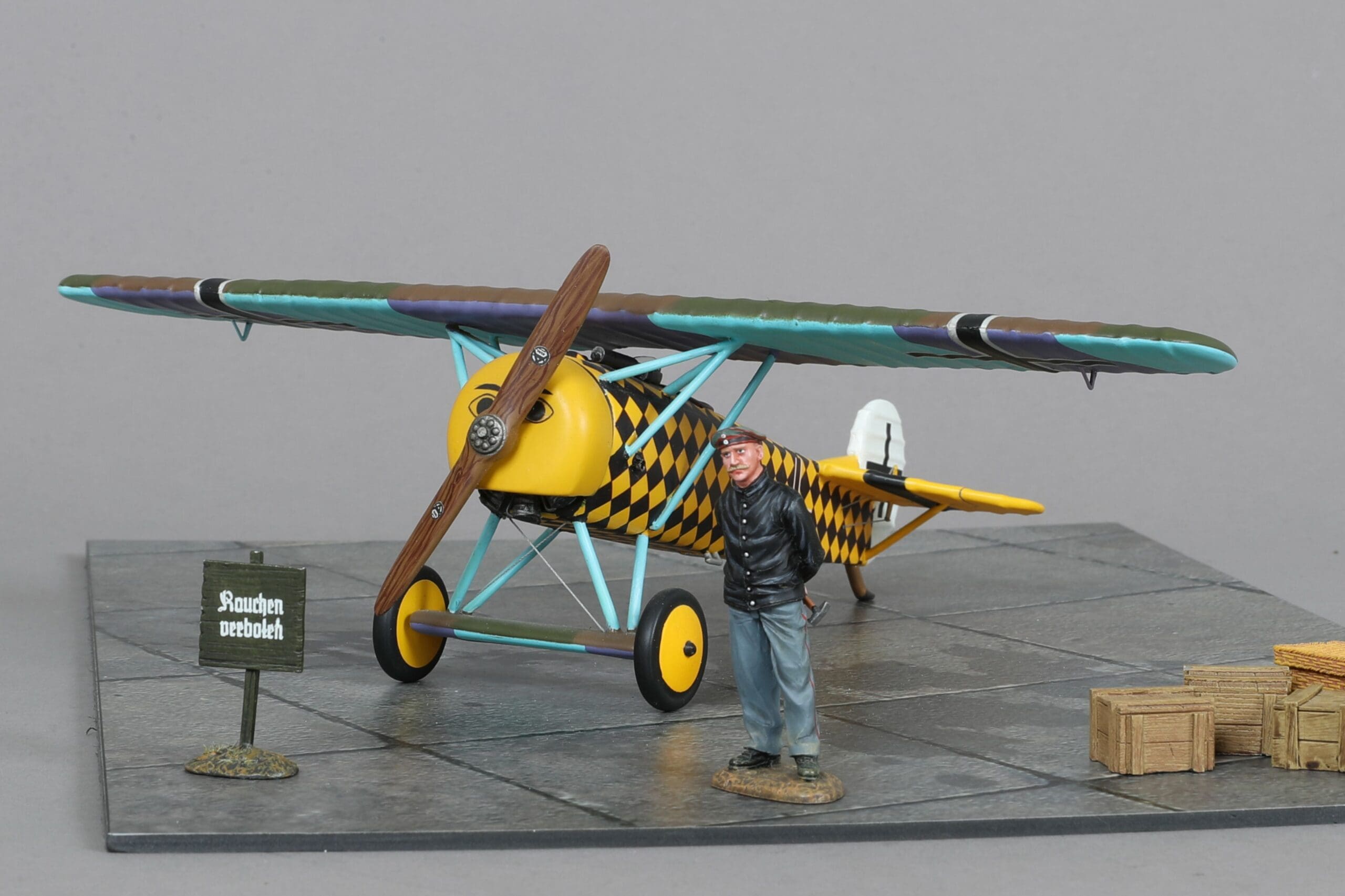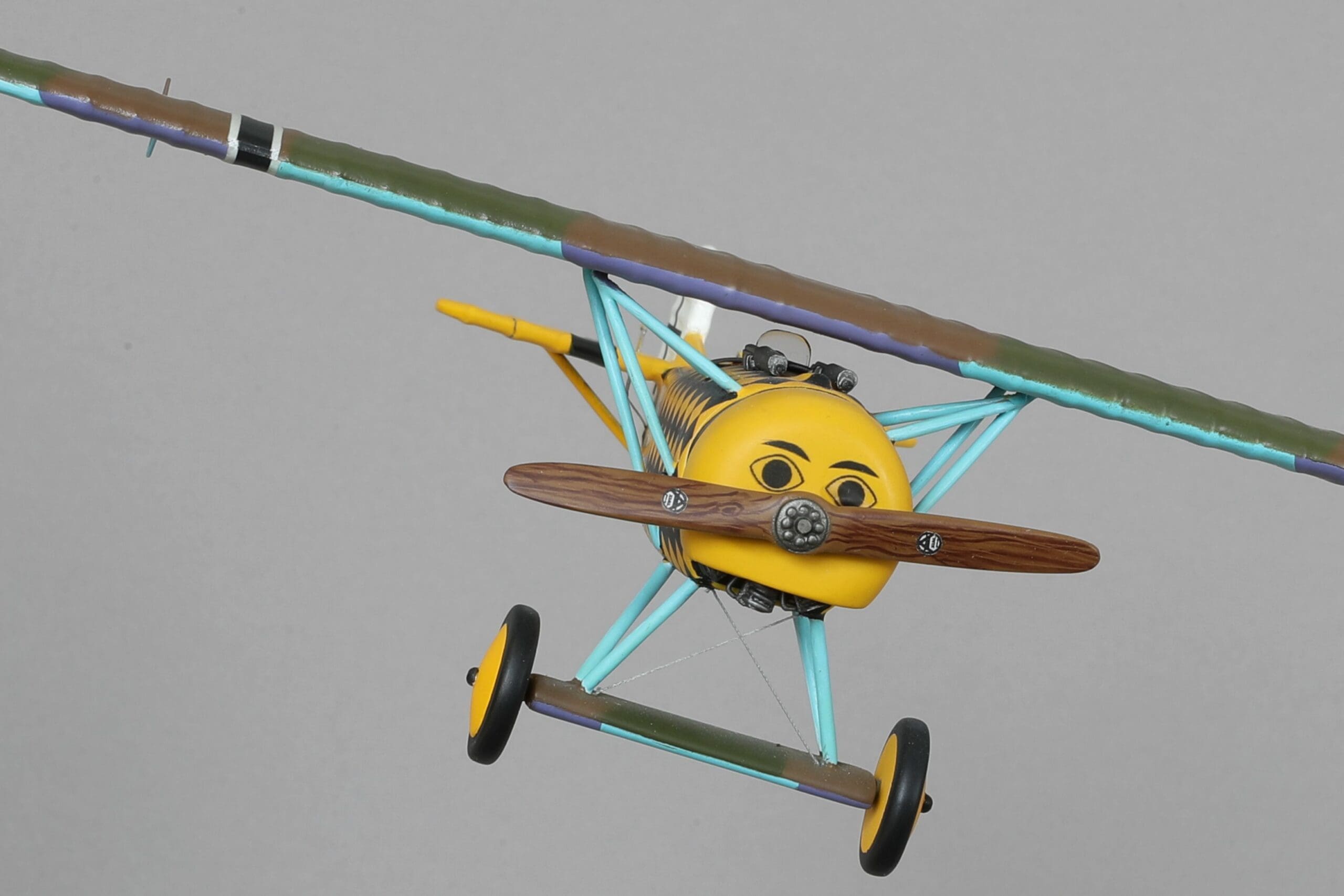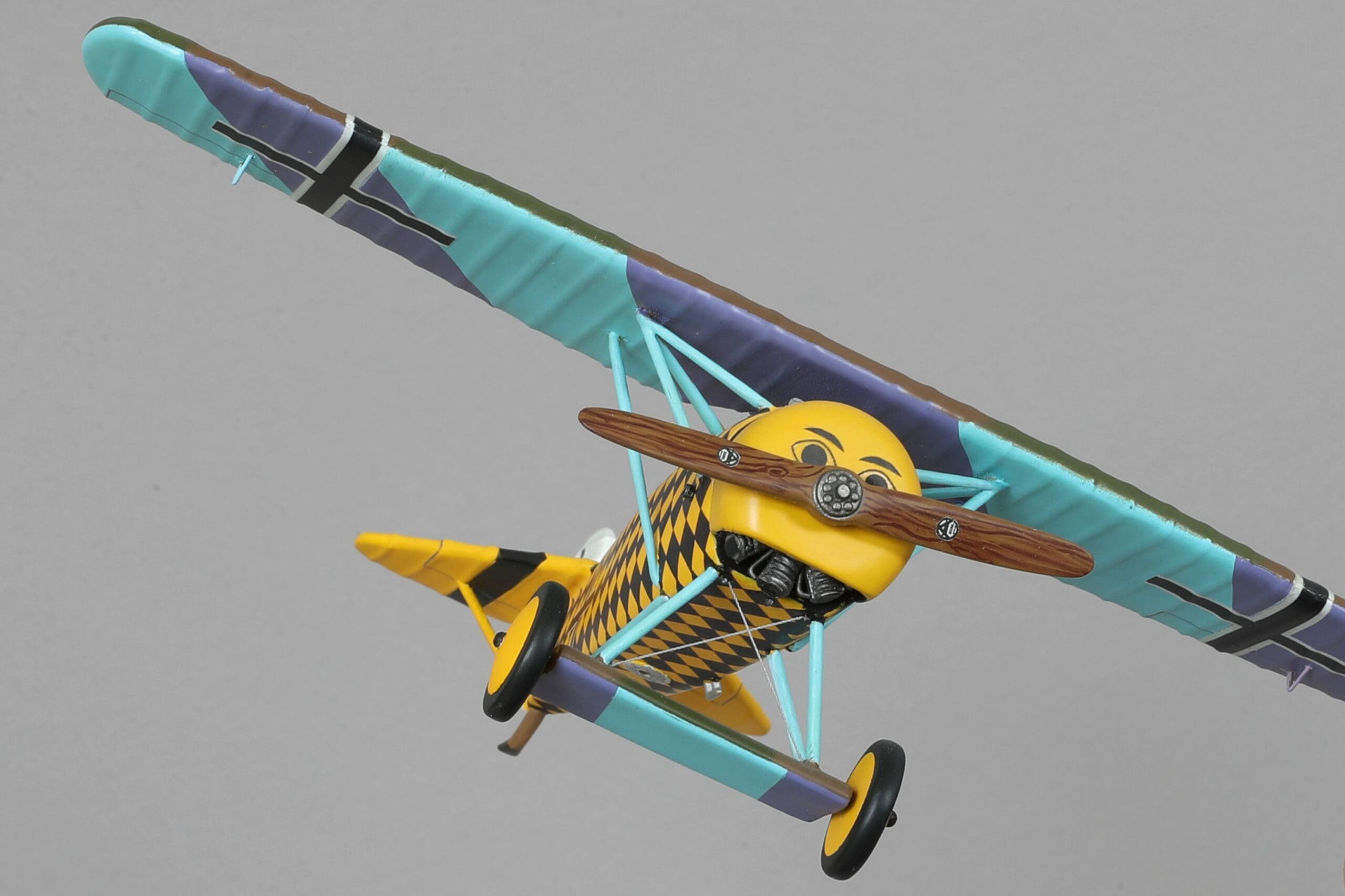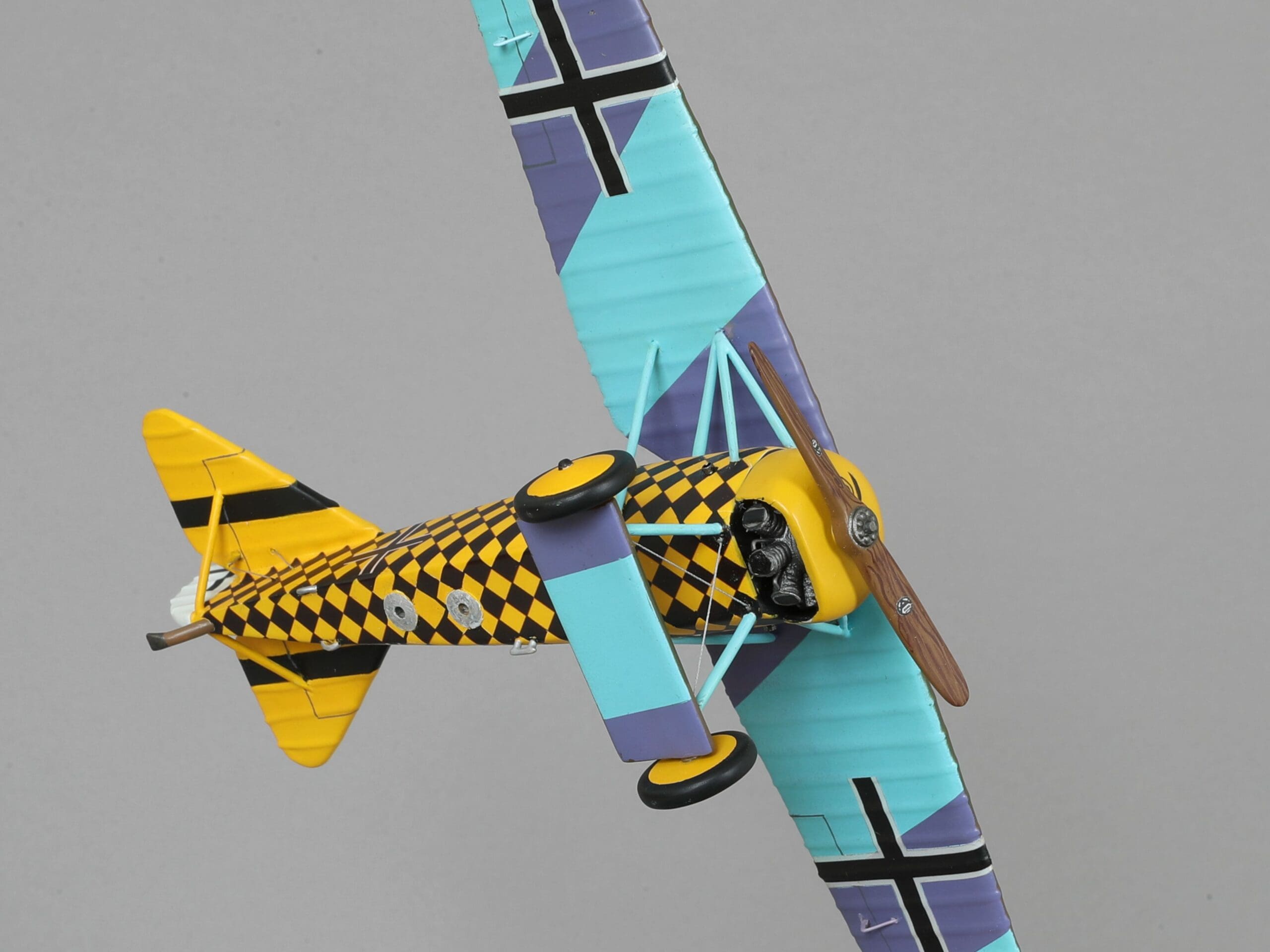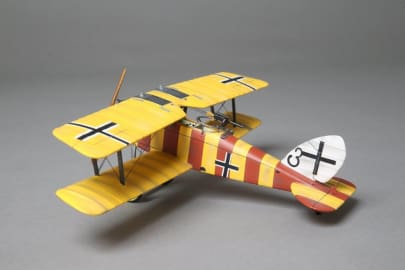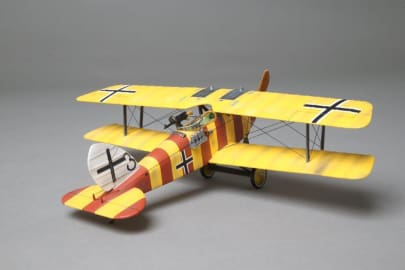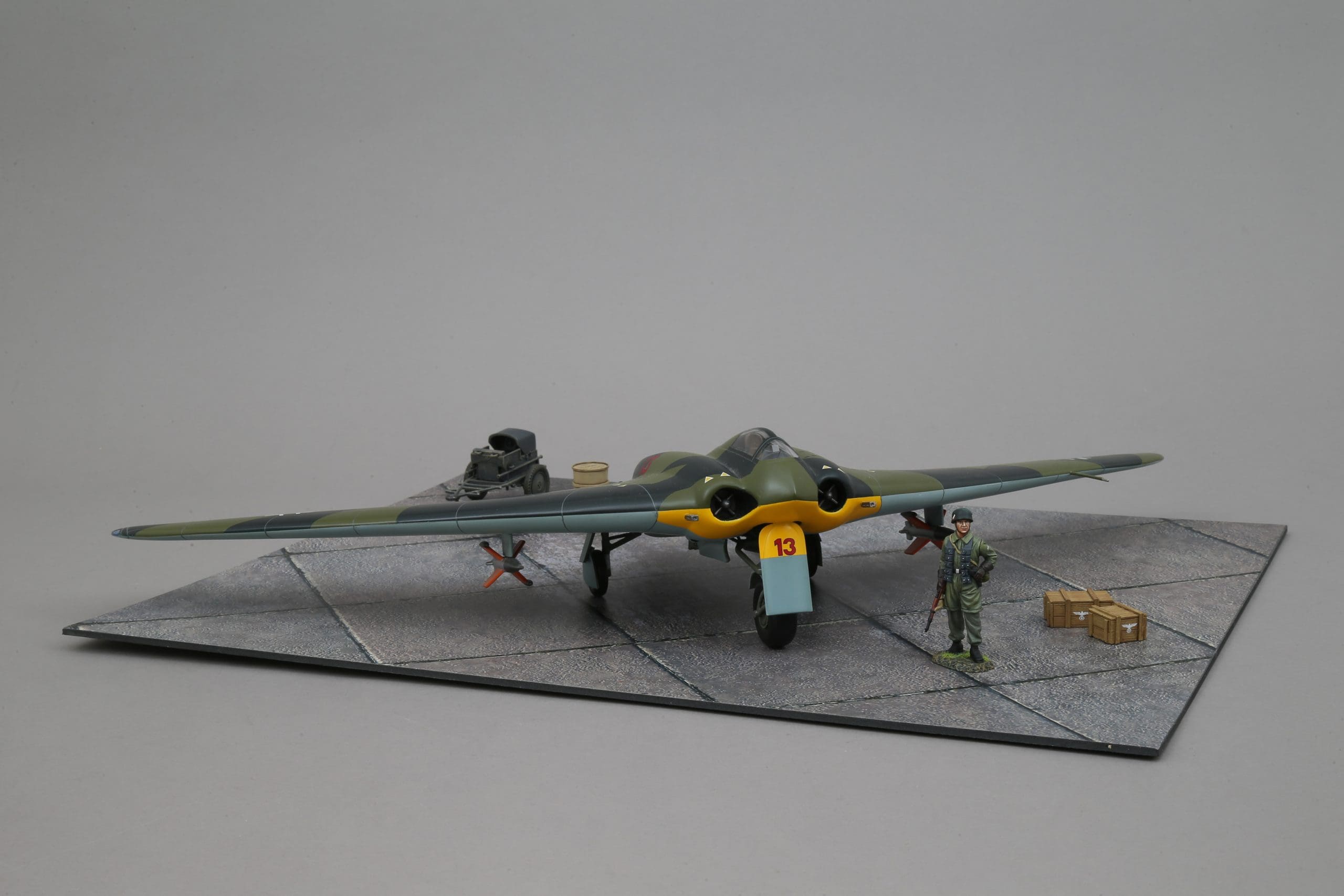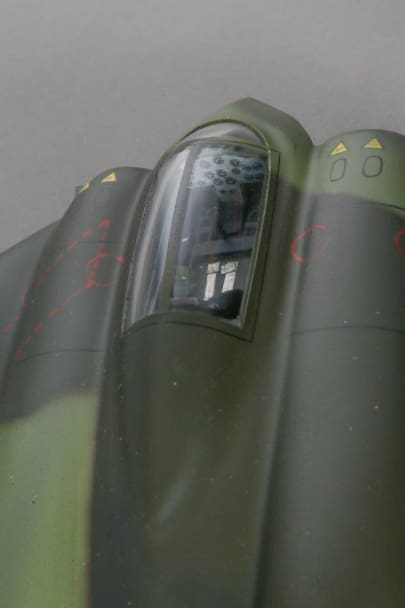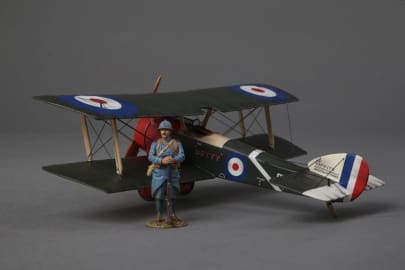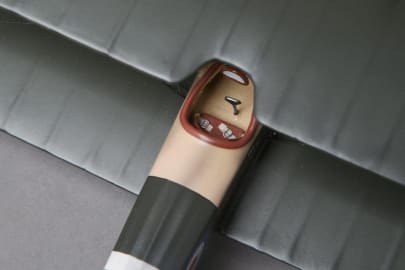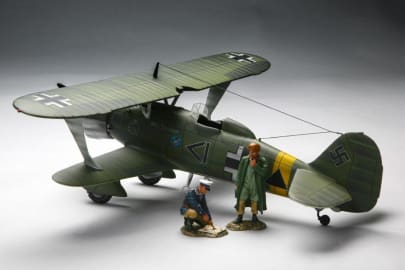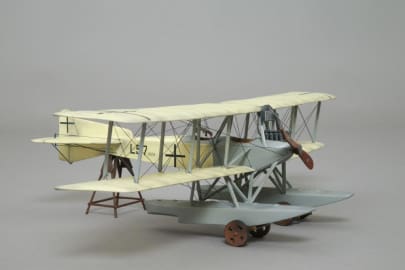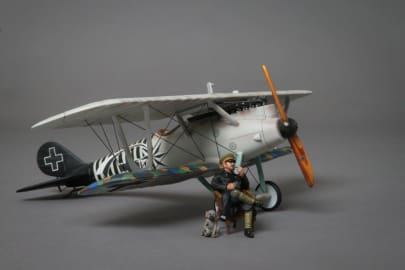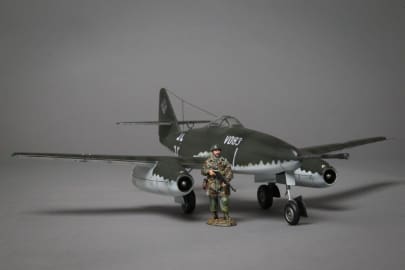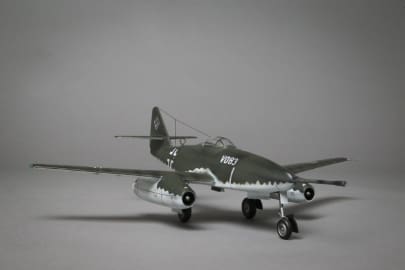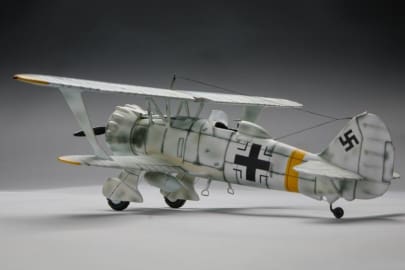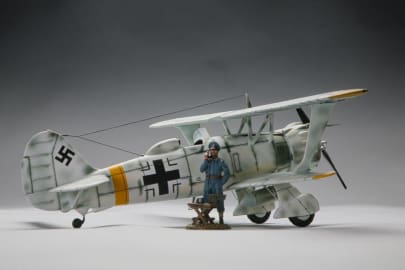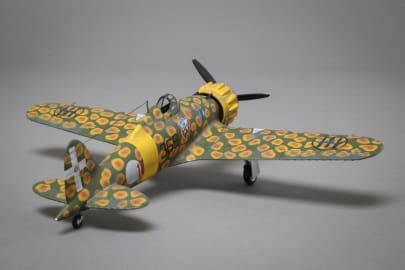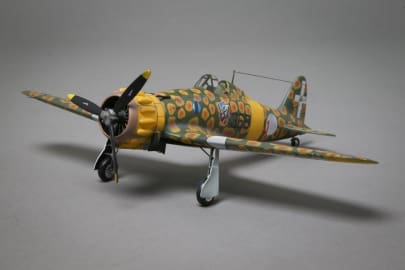- Free shipping available on orders over £100 (UK) £250 (EU) and $300 rest of the world
FOKKER D.VIII (E.V)
£520.00
Out of stock
Description
Description
The Fokker E.V was a German parasol monoplane fighter, designed by Reinhold Platz and built by Fokker. The E.V was the last Fokker design to become operational with the German air force entering service in the last months of WW1. After several fatal accidents due to wing failure, the aircraft was modified and redesignated Fokker D.VIII.. Dubbed the Flying Razor by post-war pulp-fiction writers, the D.VIII had the distinction of scoring the last aerial victory of the war.
The first production E.V aircraft were shipped to Jasta 6 in late July. The new monoplane was also delivered to Jasta 1, Jasta 19, Jasta 24 and Jasta 36. Leutnant Emil Rolff scored the first kill in an E.V on August 17, 1918, but two days later he was killed when his aircraft’s wing collapsed in flight. After another E.V of Jasta 19 crashed, the Germans grounded all E.V aircraft. Pending the investigation of these wing failures, production ceased at the Fokker Flugzeugwerke. According to Fokker, the wing failures were caused by the army technical bureau, which had forced him to modify the original design by over-strengthening the rear main spar.. This faulty design allegedly caused the wing to twist and fail. Fokker claimed that this defect was resolved by reverting to his original design.
According to most other accounts, the source of the wing failures lay not in the design, but in shoddy and rushed construction. Fokker had subcontracted construction of the E.V wings to the Gebrüder Perzina Pianoforte Fabrik factory. Due to poor quality control, inferior timber had been used and the spar caps, forming the upper and lower members of each spar assembly, had been placed too far apart during the fabrication. Because the resulting spars were vertically too large to pass through the ribs, excess material was simply planed away from the exposed upper and lower surfaces of the cap pieces, leaving the assembled spars dangerously weak. Other problems included water damage to glued parts, and pins that splintered the spars, rather than securing them.
Deliveries resumed in October. On the direction of the German High Command they redesignated the modified aircraft D.VIII. The earlier “E.” and “Dr.” prefixes for fighter monoplanes and triplanes, respectively, were abolished and all fighters would henceforth receive the “D.” prefix instead. The D.VIII commenced operations on 24 October with Jasta 11. The aircraft proved to be agile and easy to fly. Allied pilots nicknamed it the Flying Razor, presumably because it resembled a cocked straight razor in flight.
A total of 381 aircraft were produced, but only some 85 aircraft reached frontline service before the Armistice. Some reached Italy, Japan, the United States, and England as trophies after the war, but most were scrapped in accordance with the terms of the Armistice.
Our 1/30 scale Fokker D. VIII / E.V. 160/18 is in the yellow, black, and green livery of 31 victory German naval ace Lt. Gottard Sachsenberg. He was the commander of Marine Feld Jaggruppe 1 (Naval Fighter Group) in Belgium defending German naval and land units in August 1918. He scored all his victories flying the Fokker D.VII.
This all new model from TG comes from a very high quality factory specializing in WW1 models, however If you are not completely satisfied with this or any of our models please let us know and we will refund you once the item is returned to us within 30 days of sale.
The TG accessories/figures, K&C and JJD figures are shown for scale comparison purposes only and are not included.

